Media | Articles
Despite Riding a High, Values of Most ’68–72 El Caminos Are Still Affordable
Today’s automotive landscape may be populated by all sorts of half-this, half-that vehicles (coupe-SUVs, anyone?), but you can’t walk into any new-car dealer in America today and find something quite like like the El Camino.
Debuting in 1959 as a modified two-row station wagon, this car-based pickup grew up into a Chevlle-based “ute” in 1965 and was built in several generations until as late as 1987, with sales totaling nearly one million. Thanks to that long production range, you can find an “ElCo” of just about any era that suits you, from the classy tailfinned originals to the mullet-and-mustache conclusion forced out of production when pickups began to replace cars as daily drivers.

Blink, and you might miss the first generation of El Camino, introduced by Chevrolet for 1959. It was the General’s response to Ford, who had announced the Ranchero, based on its full-size car platform, for 1957. Though later generations of the El Camino would eventually outlast and outsell the Ford, the first El Camino was hardly the hit that Chevy had hoped, so the ute disappeared after just two years on the market. Three years after its competition disappeared, the Ranchero was still selling well, so Chevrolet went back to the drawing board and designed another El Camino, this time on the Chevelle platform.
The 1964 El Camino benefited from all the work Chevy had put into developing the ’64 Chevelle, including that car’s engine choices and wide-ranging trim levels. For the third generation introduced for 1968, Chevrolet infused the El Camino with the full range of Chevelle goodness, including a Super Sport (SS) variant. Today, those SS models are far and away the most expensive examples of the desirable third generation (’68 and ’69 models with the L78, L89, or LS6 exceed $100K), but if you’re on a budget, don’t be discouraged: You can find a clean, V-8 ElCo for $30K or less.

The third-gen El Camino was the most muscular one yet, both aesthetically and mechanically, thanks to its Chevelle DNA. From the A-pillar forward, it looked identical to its handsome sibling, with four headlights beneath a rakish chrome brow. The changes started at the broad B-pillar, which flowed downward to frame the sloping sides of a 79×39.5-inch bed with a bottom-hinged tailgate. And yes, the ute could tow!
Marketplace
Buy and sell classics with confidence
Engines increased in number and output when the 1968 car arrived. Displacement of the base V-8 (on the Standard trim) grew from 283 to 307 cubic inches, and output was 5 hp higher (200). The next rung up the powertrain ladder remained a 327-cubic-inch engine, but there was an additional tune on offer, for a total of three: 275, 325, and 375 hp, all available on the Custom model along with chrome molding for the lower body panels.
The SS-spec engines in 1968 included the “Turbo-Jet” L35, which displaced 396 cubic inches, and the L34, which Chevy called a 396 but whose displacement was actually 402 cubic inches. Those mills made 325 and 350 hp, respectively. The magic years, for those who want maximum performance in their third-gen El Camino, are 1969 and 1970. In ’69, Chevrolet added two more SS-spec engines, the 396-cubic-inch L78 and the aluminum-head L89, both rated for 375 hp. The legendary 454-cubic-inch V-8 arrived for 1970 in two states of tune: LS5, with 360 hp, and the holy-grail LS6, with 450. The LS5 was available in the El Camino for ’71 and ’72 as well, but after 1970 the LS6 was gone from the lineup.

GM tweaked the styling of each model year from 1968 to 1972, though the most obvious changes occurred every other year and are most easily seen at the front. In 1970, the chrome “brow” disappeared, replaced by front fenders that plunged nearly straight down, rather than back, and flanked a larger, rectangular grille. In 1971, Chevy replaced the pairs of headlights with single lenses, and integrated two stacked turn signals into the forward ends of the front fenders. Those stacked elements blended into one for 1972, the final year of the third generation.

There’s a clearly defined hierarchy of values when it comes to the El Camino, and it should be familiar to muscle car fans—the rarer and more powerful the engine, the higher the price. The king of the ’68–72 El Caminos, ranked by value, is the SS 396 from 1969: One in #2 (excellent) condition is $128,000, and a concours-quality example breathes even rarer air: $174,000. Interestingly, the El Camino with the largest-displacement and most powerful engine, an LS6-powered 1970 car, costs less: $105,000 in #2 condition.
The good news for ute enthusiasts on a budget is that El Camino values decrease rapidly as the engines become slightly tamer and the production numbers more plentiful. You don’t even have to give up an SS badge: Set aside the 454, and the two highest-spec engines for ’69 (the L78 and the L89), and you can get an SS in #2 condition between $39,200 and $41,800. If you simply want an El Camino, and don’t have to have an SS, your options become even more plentiful and affordable: With the exception of the 1970 year, 350- and 375-powered cars fall below $40K. Find a lovingly maintained driver with few dings, and you’re well under $30K.
El Caminos are sometimes—but not always—cheaper than their better-known brethren, Chevelles. The top end of the Chevelle market is far above that of the El Camino, even after setting aside the COPO and Yenko cars: a 1970 LS6 coupe, for instance, is $172,000 in #2 condition; a convertible, $369,000. However, at $128K in #2 condition, the top-dog El Camino (’69 L89), is more expensive than the comparable Chevelle. Step a little further down the ladder, and a 454-equipped El Camino from 1970 is $58,600, while an LS5-powered Chevelle of the same vintage is $86,400. Compare prices for 350-powered Chevelles and El Caminos, though, the Chevelle is sometimes the better bargain. In short, any comparison between the two markets must leave room for nuance.

Though values for the ’68–72 El Camino are up 25 percent over the last five years, much of that increase is explained by the heating we saw across the collector car market during and immediately after the pandemic. Pre-pandemic, values were growing, but very gradually. Values for third-gen El Caminos are quite stable, as a rule: Their last significant fluctuation was in 2009 and mirrored another broader trend–the dramatic correction of the muscle car market.
The ’68–72 cars are most often purchased by those who remember them as a weird, awesome highlight of the muscle car’s golden era. This vintage of El Camino appeals disproportionately to boomers, who represent 32 percent of the collector car market as a whole but make up nearly half of insurance quotes we receive for this generation ElCo. Gen X falls in second place, with 26 percent of third-gen El Camino quotes (but 31 percent of the overall market).
A delightfully weird offshoot of Chevrolet’s most horsepower-happy years, the third-gen El Camino is a classic for good reason. The wide spread of values covers a broad array of buyers, from discerning collectors of American muscle who want a perfectly preserved LS6-powered example to enthusiasts who want an affordable, cool collectible that might even make the weekend trip to Home Depot a little easier.
***
Check out the Hagerty Media homepage so you don’t miss a single story, or better yet, bookmark it. To get our best stories delivered right to your inbox, subscribe to our newsletters.

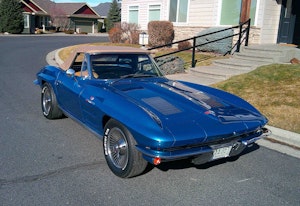
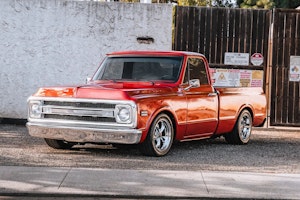
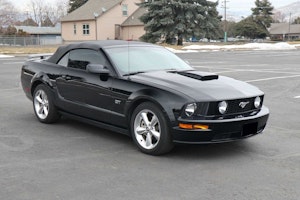
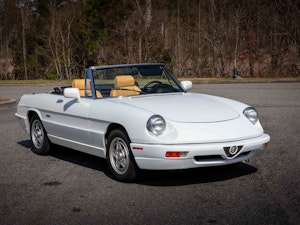
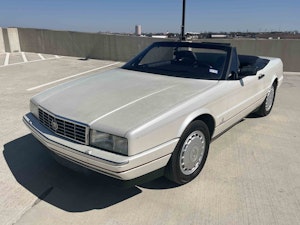
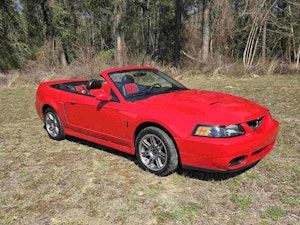
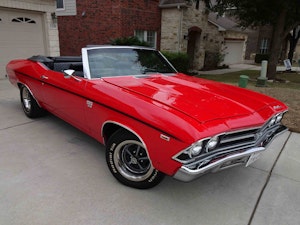
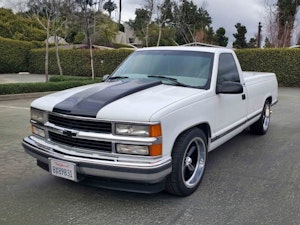







The big V8 El Camino’s were a lot of fun. Don’t see so many these days.
When I got out of the Army in ’71, I bought a ’68 El Camino SS 396, factory 4 spd with a bench seat. Loved that car ( still do) and hated to sell it, but family was growing and the El Camino just wasn’t big enough.
Still waiting for the 5th gen to catch up. I’m keeping my 86 in as much original conditional as I can.
ALL El Caminos are fairly cool – let me state that up front – but after having lived with the ’66 and ’67 models, all later models seemed to pale in my view. Oh, there was still some excitement (IMO) into ’69-’70, but it was beginning to be a bit like Rancheros – growing bloated and promising more luxury than utility (or even performance, which the SS branding had originally brought). By ’72, I just thought they had fully bought into the “more-is-more” philosophy at Chevy.
Apologies to those later model lovers (and you have your valid reasons, I’m sure), but honestly, any El Camino past ’67 just doesn’t do it for me.
The same car was also available as the GMC Sprint, which I don’t think they mentioned. IIRC, it’s basically the same vehicle with some badge engineering. Possibly less expensive than an ElCo.
Yes, I’m not sure how an in-depth article on the El Camino doesn’t include the Sprint. The two were really on in the same with GMC placed where the bowtie would be and SP replaced the SS. I have found over the years that nice Sprints tend to be a bit more expensive as they are unique from the Caminos and are a bit more rare.
I own the 1987 GMC Caballero Amarillo. She was the last production year and is a cute little truck-lette. I still use her as a truck, going to the dump, lumber yard is a fun outing. Hubby has the 1987 El Camino SS, both of our babies are original. My GMC was less $$ than his ELC.
I had a 78 Ranchero and later a 82 El C ameno. Perfect vehicle for the average homeowner who needed to haul a couple of pieces of plywood or household appliances home and look cool doing it. I didn’t need a step ladder to get into it. They both drove great and I even took a cross-country vacation in the Ranchero to Yellowstone park. I found a fiberglass topper and we slept on air mattresses in the back. I know, you’ve heard it a million times, but I wish I would have kept one.
I had a 1972 Ranchero with all original 429 ci engine, 4 bbl carb, C6 heavy duty automatic that would smolder both rear tires from a stoplight and got about 9 miles to the gallon. It was the GT with the factory stripes and always turned heads.
Well researched and written article. Thanks!
I’ve owned three so I know the marque well. I agree that the 3rd gen is the best, but everyone is different. It has the best lines (IMO) with the thicker B/C pillar, and the powertrains in that era offered a lot. My old 1970 had a 350/300HP 4 speed, 3.31 posi, from the factory. My current 1971 has the 400 (aka 402 Big Block) THM400 automatic, 3.73 posi, with only 20k miles. They’ll never make these “hybrids” again!
I’ve always liked them all, for combining the ‘look’ of a passenger car, and the utility of a light weight Pickup! As I get older I’m beginning to like the first ones (’59-60) better… because they are so different from today’s ‘boxes’ sold as cars!
Paul B- A friend inherited his fathers 74 Ranchero GT with the 460. His father removed the GT decals on day one , because you know, back then who’d have thought. It was black and with the Magnum 500’s and a bit of chrome an attractive piece. My friend used it on occasion and it was a good looking survivor. The Thermoquad spread bore ( much the same as the Quadrajet which we called Quadra -junks ) finally bit the dust. Cost less to replace the intake and put on a fresh Holley at that time. Thanks to my lending a hand he let me borrow it when need be. While not a monster on hp and a gas hog it had enough torque to haul a good size load in the bed without complaint. A reasonably comfy ride too. From that perspective I can appreciate the utility of a ” gentleman’s pickup ” . The pure muscle versions I don’t get. They carry that ‘rednecks hotrod ‘ stigma and I think deservingly so. Then when you add todays more than extra cost…the harbinger of the crazy horse pickups … only somewhat smarter.
I’ve owned 2 ’68 ElCaminos for the last 20 years. My latest is a Restomod with a 431 Cu In LSX engine and 6 speed. With updated suspension and brakes, it makes a killer Autocross and Road Course car that can still be driven on the street and haul lumber if called to. At some point someone will need to pry my fingers from the steering wheel, but until then I’m going to have fun with it. Drive Em Hard!
They’re brilliant as suburban vehicles – yard supplies, furniture, etc – and back in the day were common among racers for hauling parts, push vehicles, etc. Had several, and liked them a lot. Traditionally they didn’t have much braking, but that’s an easy fix nowadays. Ford Rancheros also had their fans, yet Chrysler totally missed the boat on that niche.
I am on my third year of a 1968 ElCamino resto mod. 454 with fuel injection, four speed automatic. Updated suspension and breaks.
I have loved the ElCamino since the start. My first one was a 1978 which I bought as a retirement gift to my self when I retired from 21 years in the Navy
Are these still being built Down under as Utes?
I’ve owned my 1970 El Camino Custom since 1973. I’ve put 4 different engines in it, changed the 3-speed to a 4-speed Muncie, changed the 10 bolt rearend to a 12 bolt and front disc brakes. And it’s been painted 4or 5 times. So, there’s nothing “original” on this car, but it still looks and runs great. Every time I drive it, I get a thumbs up from someone!